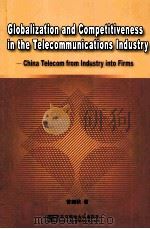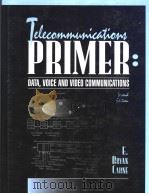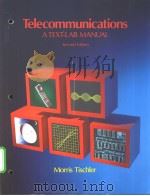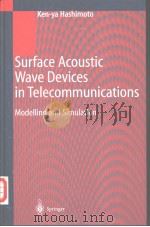《TELECOMMUNICATIONS PRINCIPLES(IN M.K.S.UNITS)》
| 作者 | 编者 |
|---|---|
| 出版 | 未查询到或未知 |
| 参考页数 | 446 |
| 出版时间 | 没有确切时间的资料 目录预览 |
| ISBN号 | 无 — 求助条款 |
| PDF编号 | 811324048(仅供预览,未存储实际文件) |
| 求助格式 | 扫描PDF(若分多册发行,每次仅能受理1册) |
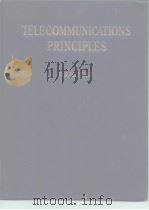
CHAPTER ⅠELECTRONS1
1.1.Effects of electricity1
1.2.Construction of matter1
1.3.Compounds and elements1
1.4.Molecules1
1.5.Atoms1
1.6.Electrons,protons,and neutrons2
1.7.Atonic structure2
1.8.Ions3
1.9.Electric currents3
1.10.Conductors and insulators3
1.11.Direction of current flow3
CHAPTER ⅡTHE D.C.CIRCUIT5
2.1.Current5
2.2.Electromotive force and potential7
2.3.Conductors8
2.4.Insulating materials9
2.5.Resistance10
2.6.Conductance13
2.7.Rheostats14
2.8.Resistors15
2.9.Temperature coefficient17
2.10.Ballast resistors19
2.11.Ohm’s law20
2.12.Resistors in series21
2.13.Fall of potential22
2.14.The potentiometer23
2.15.Resistors in parallel24
2.16.Resistors in series-paraller26
2.17.Cabling and wiring29
2.18.Insulation resistance of lines30
2.19.True and apparent line resistance31
2.20.Attenuation32
2.21.Kirchhoff’s laws32
2.22.Maxwell’s method37
CHAPTER ⅢPOWER AND ENERGY43
3.1.Energy43
3.2.Energy conversion43
3.3.Energy in telecommunication43
3.4.Electrical energy44
3.5.Power44
3.6.B.O.T.unit47
3.7.Efficiency47
3.8.Energy conversion equivalents47
3.9.Heat generation48
3.10.Metal filament lamps49
3.11.Fuses49
3.12.Conversions from electrical energy50
3.13.Thermo-e.m.f.51
CHAPTER ⅣCELLS52
ELECTRO-CHEMISTRY52
4.1.Electrolysis52
4.2.Ionization52
4.3.Electrolysis of water52
4.4.Quantity53
4.5.Faraday’s laws54
4.6.Current55
4.7.Electrolytic corrosion.55
VOLTAIC CELLS55
4.8.Simple voltaic cell55
4.9.E.m.f.of cell56
4.10.Local action56
4.11.Polarization57
4.12.Internal resistance57
4.13.Calculation of e.m.f.PRIMARY CELLS60
4.14.Leclanché cell61
4.15.Air depolarized cell63
4.16.Dry cells63
4.17.Maintenance of Leclanché cells64
4.18.Sizes of cells65
4.19.Inert cells65
4.20.Standard cell.65
SECONDARY CELLS66
4.21.Elements of secondary cells66
4.22.Chemistry of secondary cells66
4.23.Construction of plates67
4.24.Planté positive plates67
4.25.Rosette positive plates68
4.26.Fauré plates68
4.27.Active material69
4.28.Demi-Planté positive plates69
4.29.Forming process for Planté plates70
4.30.Forming process for pasted plates70
4.31.The electrolyte70
4.32.Construction of cells71
4.33.Voltage changes72
4.34.Capacity of cells72
4.35.Internal resistance of secondary cells74
4.36.Charging74
4.37.Discharging75
4.38.Faults75
4.39.Cadmium testing76
4.40.Efficiency of cells76
4.41.Alkaline cells.77
GROUPING CELLS78
4.42.Cells in series78
4.43.Cells in parallel79
4.44.Cells in series-parallel81
4.45.Reversed cells82
4.46.Counter-e.m.f.cells83
4.47.Grouping cells for maximum current83
4.48.Unlike cells in parallel.Kirchhoff’s laws85
4.49.Charging circuit86
4.50.Battery floating89
CHAPTER ⅤELECTROSTATICS91
5.1.Electrification by friction91
5.2.Law of attraction and repulsion91
5.3.Application of electron theory91
5.4.Conductors and insulators91
5.5.Inverse square law91
5.6.Permittivity92
5.7.Induction93
5.8.Charging by induction93
5.9.Charge density94
5.10.The electroscope94
5.11.Electric field95
5.12.Electric flux96
5.13.Potential96
5.14.Lines of potential97
5.15.Capacitance97
5.16.The capacitor98
5.17.The parallel plate capacitor98
5.18.Dielectric strength100
5.19.Dielectric absorption101
5.20.Dielectric loss101
5.21.Capacitors101
5.22.Variable capacitors103
5.23.Non-inductive capacitors104
5.24.Capacitors with inherent resistance104
5.25.Electro-lyric capacitors104
5.26.Capacitors in series107
5.27.Capacitors in parallel108
5.28.Screening110
5.29.Self-capacitance of coils110
5.30.Valve inter-electrode capacitance110
5.31.Capacitance of cables110
5.32.Effects of line capacitance111
5.33.Energy113
5.34.Time-constant114
5.35.The shunted capacitor117
5.36.Propagation velocity of cables117
CHAPTER ⅥMAGNETISM120
6.1.Magnetic properties120
6.2.Law of attraction and repulsion120
6.3.Inverse square law120
6.4.Magnetization by contact120
6.5.Magnetic induction121
6.6.Residual magnetism and coercive force121
6.7.Position of poles121
6.8.Intensity of magnetization122
6.9.Magnetic field122
6.10.Lines of force122
6.11.Terrestrial magnetism123
6.12.Magnetic flux124
6.13.Permeability125
6.14.Hysteresis126
6.15.Magnetic materials128
6.16.Non-magnetic alloys129
6.17.Magnetically soft materials129
6.18.Permanent magnets132
6.19.Magnetic theory136
6.20.Magnetic screening138
6.21.Force between magnetic poles139
6.22.Energy stored in magnetic field139
CHAPTER ⅦELECTROMAGNETISM141
7.1.Directions of current and magnetic field141
7.2.The solenoid141
7.3.Magnetizing force of electromagnetic field141
7.4.Flux density of a solenoid142
7.5.The magnetic circuit142
7.6.Reluctance143
7.7.Magnetic leakage145
7.8.Electromagnets and relays146
7.9.Flux linkage148
7.10.Electromagnetic induction149
7.11.Direction of induced e.m.f.150
7.12.Inductance150
7.13.Magnitude of induced e.m.f.151
7.14.Inductors in series152
7.15.Inductors in parallel153
7.16.Inductance of a solenoid153
7.17.Mutual inductance of two solenoids154
7.18.Influence of cur-rent on inductance154
7.19.Eddy currents155
7.20.Skin effect156
7.21.Inductors157
7.22.Time-constant158
7.23.Energy of magnetic field163
7.24.Non-inductive resistors164
7.25.Spark quench circuits164
7.26.Electromagnetic interference165
7.27.Vibratory power converters165
CHAPTER ⅧGENERATORS168
8.1.E.m.f.induced by a moving conductor168
8.2.Magnitude of induced e.m.f.168
8.3.Direction of induced e.m.f.168
8.4.E.m.f.induced in rotating coil169
8.5.The d.c.generator170
8.6.Armature circuit171
8.7.Armature con-struction173
8.8.Armature reaction174
8.9.Commutation175
8.10.Brush position175
8.11.Compoles175
8.12.E.m.f.of bi polar d.c.generator176
8.13.Multi-polar machines176
8.14.The shunt-wound d.c.generator circuit177
8.15.Voltage control178
8.16.Dynamo losses and efficiency178
8.17.Battery charging and floating179
8.18.A.c.generators181
CHAPTER ⅨTHE D.C.MOTOR185
9.1.Force acting on energized conductor185
9.2.Magnitude of force186
9.3.Direction of force186
9.4.Torque acting on energized coil187
9.5.The d.c.motor188
9.6.Motor torque and speed188
9.7.Position of brushes189
9.8.The shunt-wound d.c.motor circuit189
9.9.Speed control190
9.10.Motor losses and efficiency191
9.11.The rotary converter and dynamotor192
CHAPTER ⅩALTERNATING CURRENTS193
MAGNTTUDE AND PHASE193
10.1.Sine waveform193
10.2.Frequency194
10.3.Phase195
10.4.Maximum or peak value195
10.5.Instantaneous value195
10.6.Average value197
10.7.R.m.s.or effective value.197
SIMPLE A.C.CIRCUITs199
10.8.Circuit with pure resistance199
10.9.Circuit with pure inductance199
10.10.Circuit with pure capacitance.201
SERIES CIRCUITS202
10.11.Resistance and inductance in series202
10.12.Resistance and capacitance in series203
10.13.Inductance and capacitance in series205
10.14.Impedance205
10.15.Resistance,inductance,and capacitance in series208
10.16.Impedances in series212
10.17.Series resonant circuit.213
PARALLEL CIRCUITS216
10.18.Resistance and inductance in parallel216
10.19.Resistance and capacitance in parallel217
10.20.Inductance and capacitance in parallel220
10.21.Resistance,inductance,and capacitance in parallel221
10.22.Parallel resonant circuit222
10.23.Rejector circuit with resistance222
10.24.Admittance224
10.25.Impedances in parallel226
10.26.Power227
CHAPTER ⅪA.C.TRANSMISSION236
11.1.Principle of transformer236
11.2.Transformation ratios236
11.3.Impedance matching237
11.4.Transformer losses238
11.5.Transformer construction240
11.6.Transformers carrying direct current242
11.7.The auto-transformer243
11.8.Resonance in coupled circuits243
11.9.Impedance of coupled circuits246
11.10.Free and forced oscillations249
11.11.Complex waveform250
11.12.Distortion251
11.13.Primary coefficients253
11.14.Characteristic resistance253
11.15.Characteristic impedance255
11.16.Attenuation257
11.17.Propagation coefficient258
11.18.Attenuation coefficient259
11.19.Phase-change coefficient261
11.20.Propagation velocity262
11.21.Distortionless line264
11.22.The neper266
11.23.The decibel266
11.24.Electromagnetic radiation269
11.25.Selectivity272
11.26.Impedance networks273
11.27.Frequency filters282
11.28.Derived filters288
CHAPTER ⅫMETERS AND MEASUREMENTS293
12.1.Design principles293
12.2.Moving-coil instruments295
12.3.Ammeters297
12.4.Voltmeters299
12.5.Moving-iron instruments300
12.6.Dynamometer instruments303
12.7.Galvanometers304
12.8.The electrostatic voltmeter305
12.9.Hot-wire instruments307
12.10.Thermo-couple instruments308
12.11.Rectifier instruments308
12.12.Differ-ential meters310
12.13.Ballistic instruments311
12.14.The detector No.4.311
12.15.The Avometer313
12.16.The decibelmeter317
12.17.The millisecondmeter318
12.18.The Wheatstone bridge318
12.19.Ohmmeters322
12.20.The bridge type ohmmeter325
12.21.The potentiometer325
12.22.Resistance measurements330
12.23.Inductance measurements334
12.24.Capacitance measurements335
12.25.The a.c.bridge336
CHAPTER ⅩⅢELECTRONICS341
13.1.Electron emission341
13.2.Diode342
13.3.Diode rectification344
13.4.The triode346
13.5.Valve para-meters348
13.6.The valve amplifier353
13.7.The valve oscillator365
13.8.The tetrode366
13.9.The pentode368
13.10.Modulation370
13.11.Demodulation376
13.12.The valve voltmeter379
13.13.Metal rectifiers380
13.14.Photo-electricity385
13.15.Ionization388
13.16.The cathode-ray tube392
CHAPTER ⅩⅣSOUND395
14.1.Sound waves395
14.2.Characteristics of sound396
14.3.Voice and ear400
14.4.Microphones403
14.5.Receivers and loud speakers408
14.6.Piezo-electricity412
APPENDIX AMATHEMATICAL NOTES418
A.1.Symbols418
A.2.Calculus notation418
A.3.Trigonometry418
A.4.Vectors419
A.5.Proofs425
APPENDIX BELECTRICAL UNITS428
APPENDIX CLETTER SYMBOLS FOR QUANTITIES431
APPENDIX DCHEMICAL SYMBOLS FOR THE ELEMENTS SHOWING THE DISTRIBUTION OF ELECTRONS IN THE ATOMS432
APPENDIX EGREEK ALPHABET434
APPENDIX FUSEFUL NUMBERS AND CONVERSION FACTORS435
APPENDIX GGRAPHICAL SYMBOLS FOR TELECOMMUNICATION436
APPENDIX HEXAMINATION SYLLABUS FOR THE CITY AND GUILDS OF LONDON INSTITUTE-TELECOMMUNICATIONS PRINCIPLES437
Index439
《TELECOMMUNICATIONS PRINCIPLES(IN M.K.S.UNITS)》由于是年代较久的资料都绝版了,几乎不可能购买到实物。如果大家为了学习确实需要,可向博主求助其电子版PDF文件。对合法合规的求助,我会当即受理并将下载地址发送给你。
高度相关资料
-

- THE PRINCIPLES OF TELECOMMUNICATIONS ENGINEERING VOLUME Ⅰ
- 1957 THE ENGLISH UNIVERSITIES PRESS
-
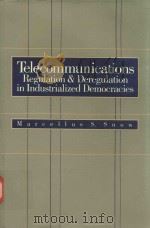
- Telecommunications regulation and deregulation in industrialized democracies
- 1986 North-Holland-Amsterdam
-

- TELECOMMUNICATIONS SWITCHING PRINCIPLES
- 1979 THE MIT PRESS
-
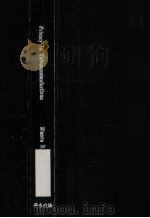
- PRIVACY IN TELECOMMUNICATIONS A EUROPEAN AND AN AMERICAN APPROACH
- 1997 KLUWER LAW INTERNATIONAL
-
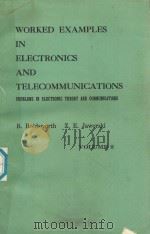
- WORKED EXAMPLES IN ELECTRONICS AND TELECOMMUNICATIONS VOLUME 2
- 1965 LONDON ILIFFE BOOKS LTD
-
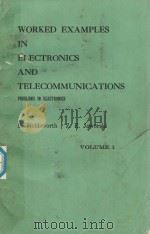
- WORKED EXAMPLES IN ELECTRONICS AND TELECOMMUNICATIONS VOLUME 1
- 1965 LONDON ILIFFE BOOKS LTD
-

- TELECOMMUNICATIONS
- 1990 REGENTS/PRENTICE HALL
-

- NETWORKS IN ACTION:BUSINESS CHOICES AND TELECOMMUNICATIONS DECISIONS
- 1994 WADSWORTH PUBLISHING COMPANY
-
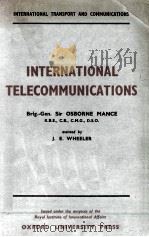
- INTERNATIONAL TELECOMMUNICATIONS
- 1944 OXFORD UNIVERSITY PRESS
提示:百度云已更名为百度网盘(百度盘),天翼云盘、微盘下载地址……暂未提供。➥ PDF文字可复制化或转WORD
